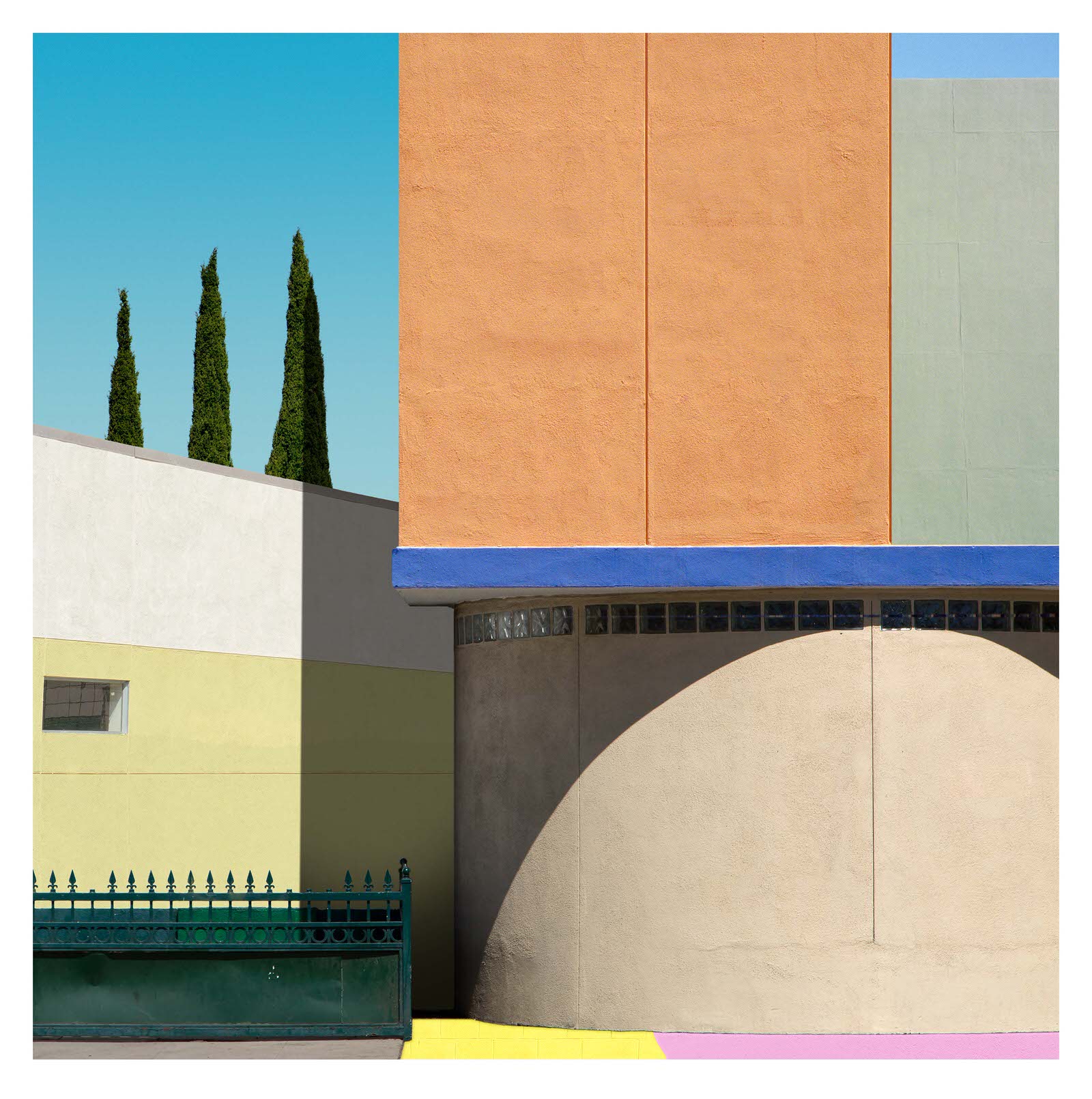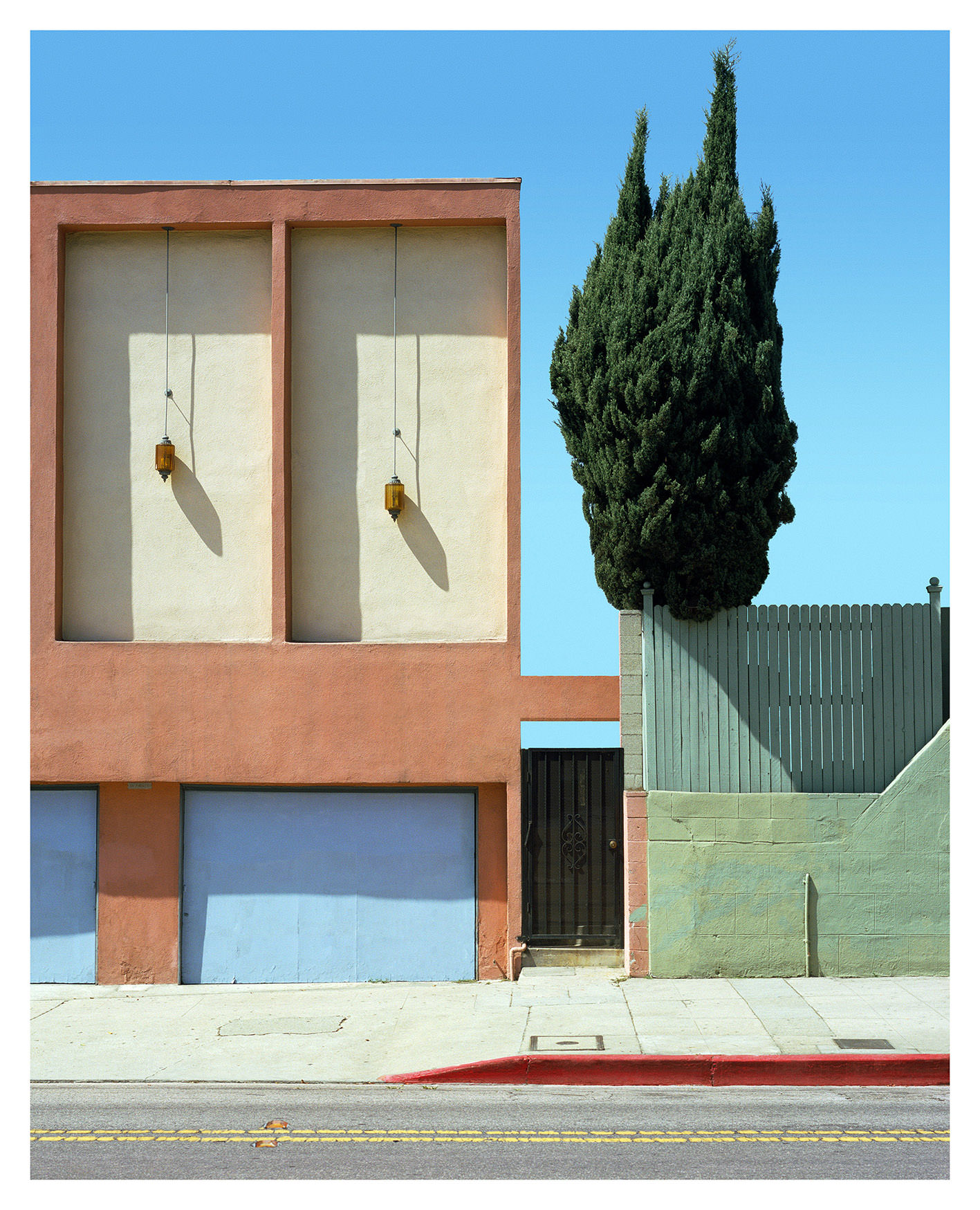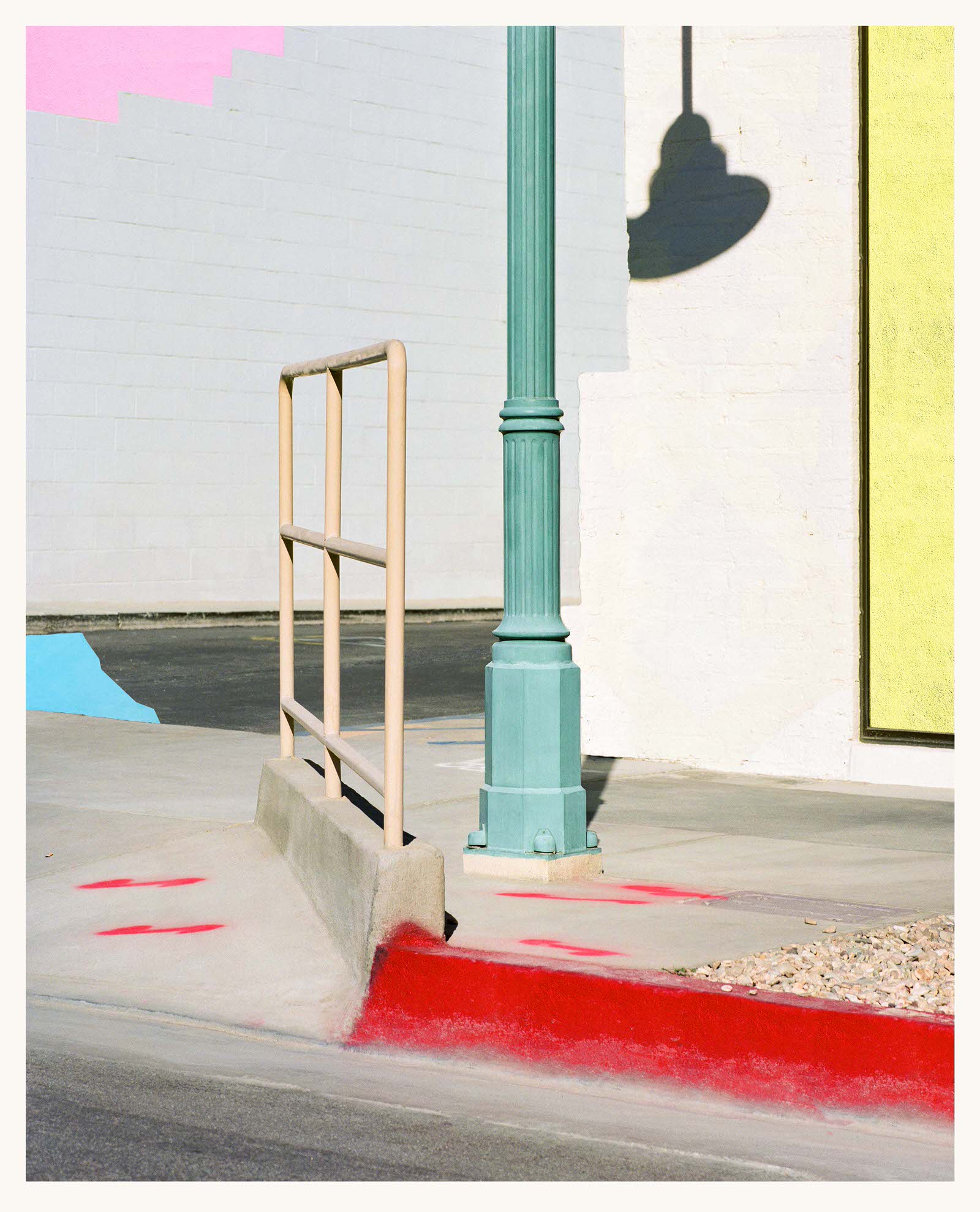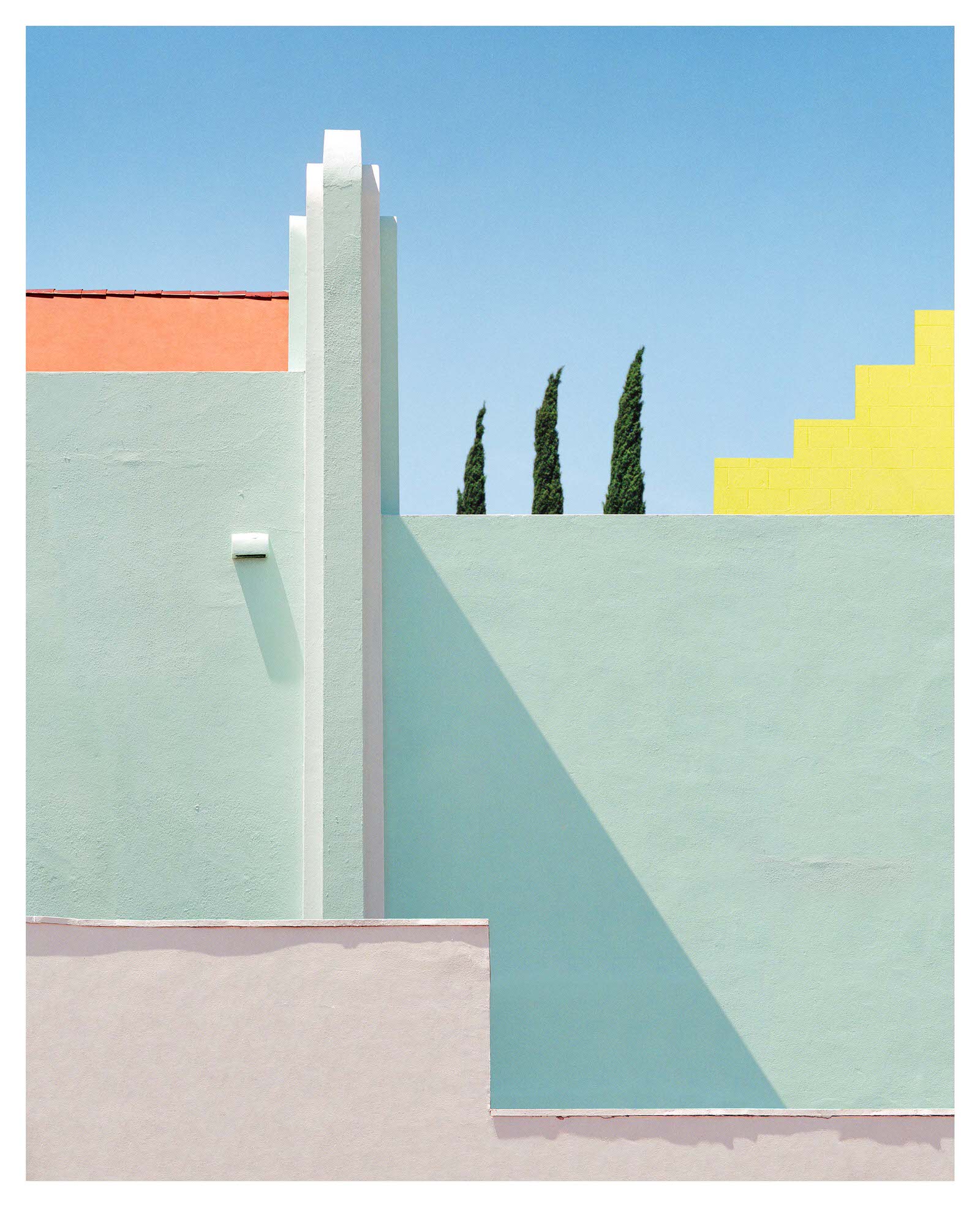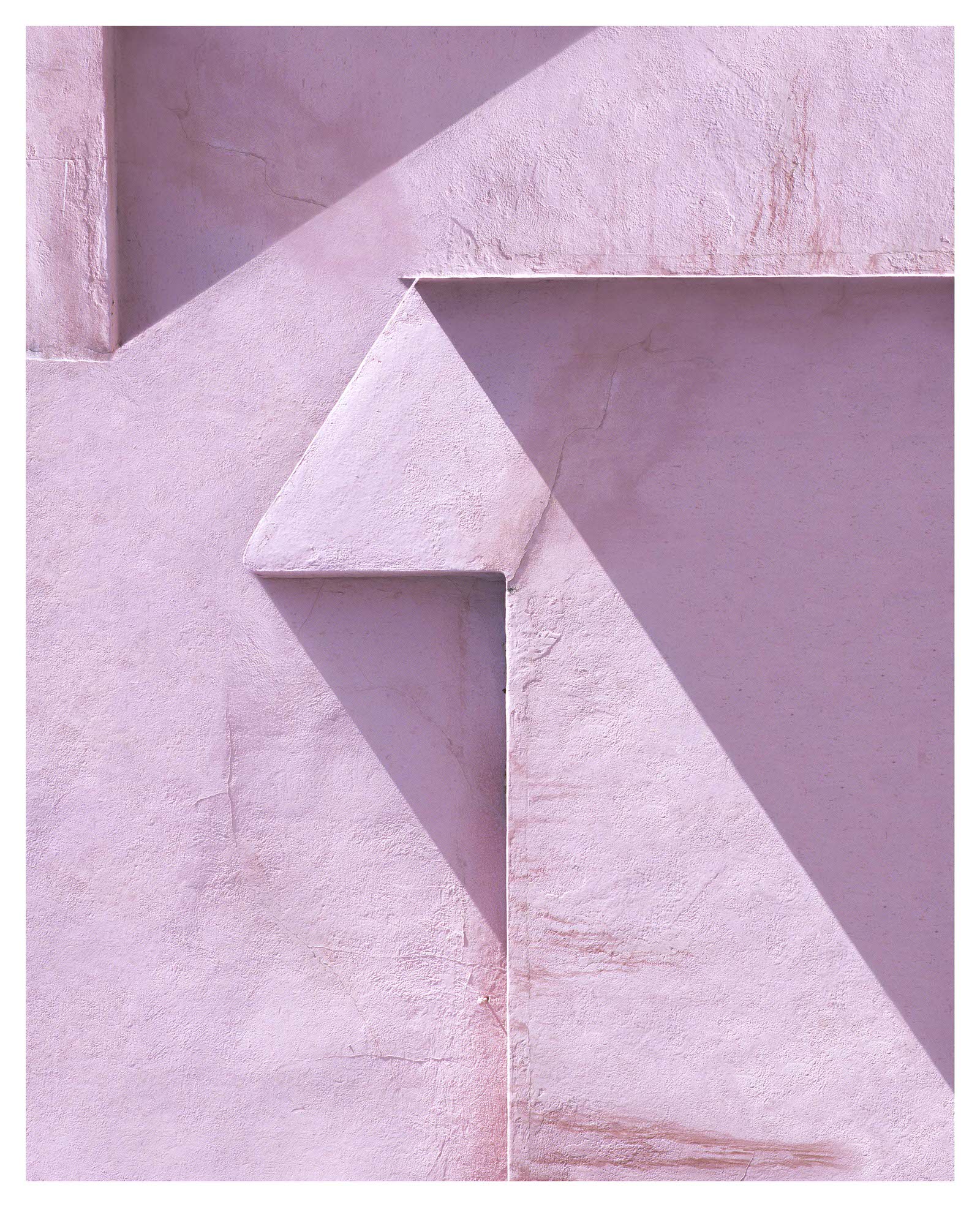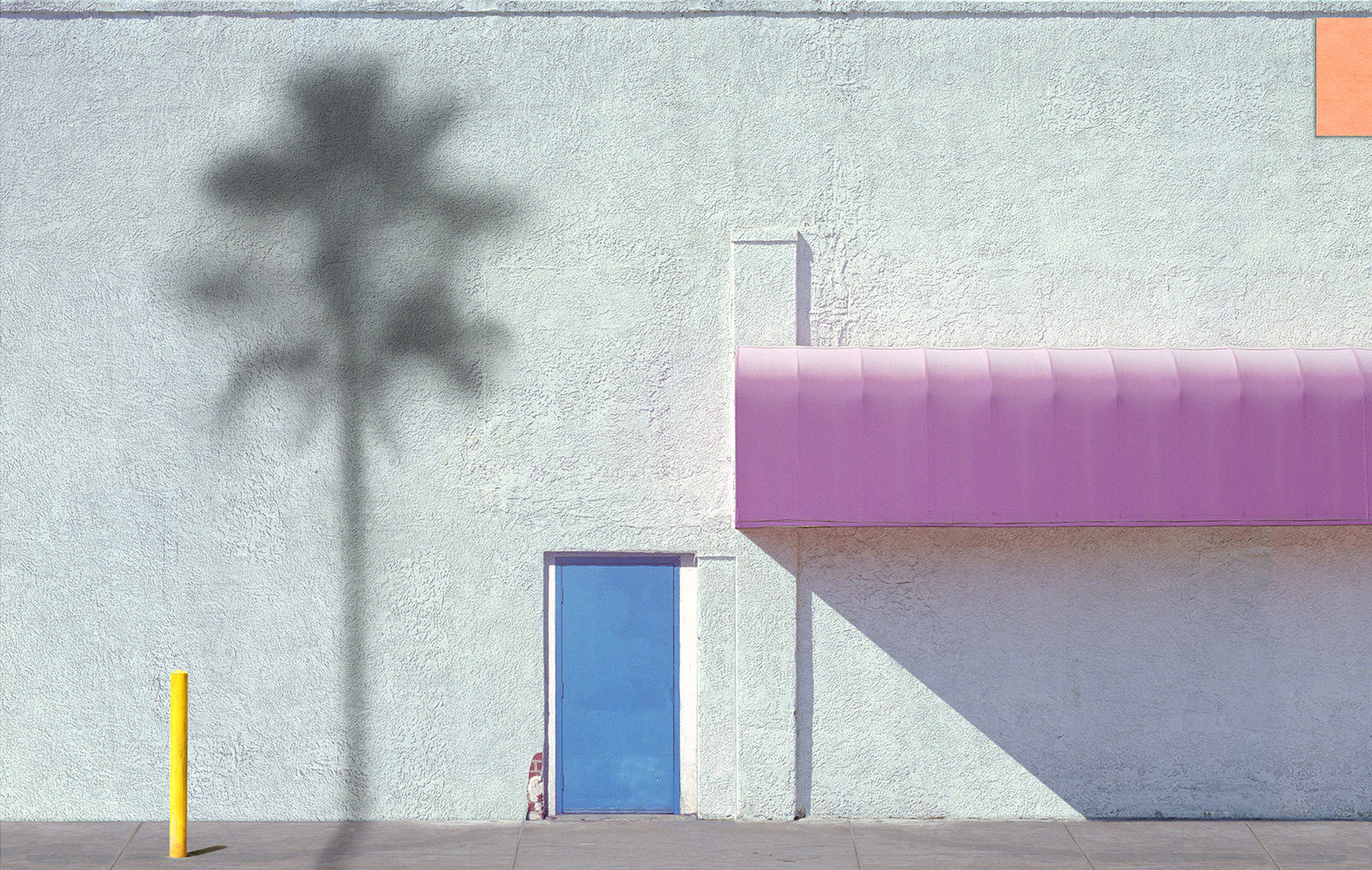
Abstracting the Everyday with George Byrne
George Byrne’s abstract compositions are deceivingly simple – but this L.A.-based Australian photographer combines an education in fine arts with an eye for the magic of composition to create an aesthetic all his own.
While George began showing his work just out of college, it wasn’t until he started taking advantage of the camera on his smartphone and discovered an outlet in Instagram that he was able to develop his own style. And when he relocated to Los Angeles in 2011, his appreciation for the urban landscape found itself with an entirely new playground to explore.
Using clean lines and vivid colors to showcase the stark beauty of the everyday scenes many of us would just pass on by, George creates large-scale abstractions that feel both familiar and entirely alien, all at the same time.
We caught up with him to find out more about what makes a good abstract composition, how he deals with creative slumps, and the difference between shooting natural and urban landscapes.
When did you first begin to consider yourself an artist? How did you get your start?
Well, I started shooting as a teenager, just for fun with my sister’s old film camera. And I was always sort of interested in art, painting and drawing, and did that at school, growing up. When I picked up the camera, I was just straightaway interested in it as a tool of expression just as much as it is a tool of documenting.
Having come from traditional expressive arts like painting, drawing, and sculpture, I approached it immediately with that sort of mind space, as opposed to a lot of people who start out in photography with a more conventional, documentary, technical sort of angle. I think that’s part of what has led me down the path I’m going now – I came at it from a slightly different angle from the start.
The advent of digital cameras in your phone allowed me to actually have a camera on me at all times, which I never really liked doing before that. I’ve always had a bit of a love-hate relationship with photography – I don’t like lugging equipment around; I don’t like feeling always under pressure to be looking for photos as opposed to being present in life. And that used to really bother me about photography.
I think the smartphone thing really helped me have a camera, develop an aesthetic, and have an outlet [with Instagram] where I could publish, and evolve, and get feedback as I was going. But it was only really the last four years that I’ve been doing this full-time. Before then, it was more like I would have a show every few years, and then I was doing every other job under the sun to survive.
What artists or photographers do you most admire? And how has their work influenced your own?
You pick up cues from people from the very start when you are interested in art yourself, from primary school to high school, to college. It wasn’t like it was one artist; it was more I accrued myriad cues from artists from all over the place as I went along.
Once I started taking photos, I sort of, through college, really learned about the history of photography. I didn’t know much about it prior to college, as I was really more into painting. Still, it doesn’t have nearly the amount of exposure that painting does, historically. It’s such a new medium.
One standout artist was Andreas Gursky, a German photographer who does these giant-scale urban photos with very manipulated things, bits and pieces. He was definitely a big gateway drug to all those other photographers – William Eggleston‘s another big one, Steve Shaw, Thomas Ruff.
I’ve been influenced by historic painters, contemporary paintings, and some various photographers along the way – and I try to come up with my own thing.
The way you see urban landscapes is not the way most people see them – how do you find so much beauty in concrete? Is it something you learned to appreciate after moving to L.A., or have you always seen it?
It was just through practice. I think I’d always seen it, especially in L.A. – I really think moving to this city unlocked my appreciation for that sort of landscape. It was a combination of the colors here, the surfaces, the light and the shadow. And the fact that I was living in it more than I was in Sydney. L.A. is such a big centralized place; you can’t just live in one perfect, beautiful neighborhood. You have to traverse the city and you see a whole host of different things.
And, like I said, I had this camera with me suddenly, all the time, and I just thought, why not? Like, “I’m on my way to work. I’ll jump out and get this photo.” And then I’d jump out and get another one.
And then it was something that I was really enjoying. It was interesting, and I thought, I’m going to go and pick up my film cameras again, my medium-format film cameras and reproduce with them, and then I’m going to print them big and see what happens.
I didn’t really know how it would be received, or whatever, but it’s been really rewarding to find other people curious and wanting to own them, as well, which just gave me a bit more freedom to keep doing it.
Your images are so precisely composed – are there specific rules you follow when you’re shooting? Or do you pick up on the lines and patterns subconsciously?
It’s just a feel thing, I reckon. Like, I know there are all sorts of rules and things like that with composition, but I’ve never really thought about that. I’m not sure what makes composition work or not work, but the level of OCD involved where you just move things around, and just back and forth, you know, you put it there, take it away, move it up, move it down, and then there’s a moment where it clicks.
Abstract painting is all about that. It’s just a bunch of elements that are put down together, and I think that’s one of the most magical, mysterious things of art, and it’s all about the placement and energy. That’s part of why I liked it.
I don’t think the rules themselves applied to art are any guarantee of anything being very interesting. I think you need to push beyond that, and it’s more of this feel, feeling how it fits. But I definitely do spend a lot of time on that. Some things are really quick and easy, and other things take weeks and months to get sorted out in my own head. It is like a bit of a puzzle, these pictures, like a Rubik’s Cube and you have to get all the colors on the right side of the board. Sometimes it’s easy and sometimes it’s a nightmare – that’s composition.
What do you think makes a strong abstract image? What are some of the elements that you try to incorporate into an image to make it work?
That’s a really good question. It’s an interplay of elements, colors, shapes, lines, textures. It’s the full gamut. It’s alchemy. And, beyond that, I think it’s just luck and grinding away to make it.
I’ve abandoned heaps of images. I get to the core of it and realize there’s nothing really there, and then you just throw it away. But I do definitely enjoy using photography like this more than sitting on the street corner waiting for things to happen, you know. That’s sort of photography I did experiment with, like street photography, the Cartier-Bresson-type of ‘Decisive Moment.’ I just found the process of waiting for that moment mind-numbingly boring, and it’s like I couldn’t stay still. I found it quite draining, and it didn’t make me happy to just be on the street waiting for things to just combine and occur.
You also shoot impressive landscapes; what do you do differently when photographing a natural environment compared to an urban one?
It’s just a really pure form of photography that is still really fun to me. And I guess I’m less driven towards it, or drawn to it in general. I think it’s a sort of time and place thing for me – it’s like the rule is always “I know it when I see it.”
I’m just as enamored with natural wilderness as everyone else. That’s the beauty of nature, and I think the dream would be to have a show of natural landscapes sometime, at some point. But it’s certainly labor-intensive work, and it’s more of a sidebar for me at this point. There’s a lot of room for me to be having different exhibitions, I think, but I haven’t really exhibited that sort of work since I’ve been doing this full-time, so it’d be interesting to see the response.
Urban stuff is certainly my voice. And in a world of 10 billion photographers, it’s nice to have carved out a little niche for yourself where you can have some level of being a little bit unique.
Do you have any particular habits that are a part of how you begin your creative process?
Coffee. Always buying coffee helps. I always feel pumped to do something when I’ve had an espresso shot in the morning. But, other than that, I’m so knee-deep in the whole process now, the cycle of exhibiting and shooting, and exhibiting and making. It’s almost like I don’t have the luxury of needing a motivator. The motivator is the pressure to have the work finished. But I think, in terms of the general sense of the creative, you just have to be open-minded and you have to be open to trying things and practicing, and I really think repetition is important.
You just have to immerse yourself. In any creative field, it boils down to just immersing yourself and getting fluent with it, just doing it, doing it. My best breakthroughs are just through being immersed in it.
And that goes for music, too. I play music as well, and I think the best stuff I’ve done with that is when I just know my material. I don’t necessarily mean you have to be obsessive, like Tiger Woods, and practice 40,000 hours a week. But you do have to, at the end of the day, pick a few things you want to do and just do them – if you’re trying to do 50 different things at once, they’re all going to stall.
What do you do when you hit a wall during your creative process?
I dump it. If I think there’s something great in it, I’ll just shelf it. There have been certain images I just kept going back to, and there’s always something in it that goes, “Oh, that shot,” and I’ll jump in and have a crack. And then, same old thing – I get to the dead end, and it doesn’t add up, and I just trash it.
That is the real challenge with photography – the editing. There’s no painter out there that has got a thousand paintings painted that year, and they just can’t pick between them. That is the one curse of photography, that you end up buried – absolutely buried – in images.
And that’s where I’m at now because I’m preparing a new show, so I’ve got this mountain of work. I’m slowly sifting through everything and making piles, and deleting, and trashing. But everyone gets that creative block. You just have to push through it, or have a break – having little holidays here and there is good. You know, if you’re a writer, you’re faced with literally a blank page, whereas at least with photos, you just move onto the next photo. We’ve got ways around it.
Or, you can go to the museum, look at books. There’s always a way to get new inspiration. I’m looking at everything and trying to take as much in as I can. Whenever I see a good composition in a poster or a magazine, or anywhere if I’m just walking around, I’ll take a quick snap of it just as a reference point.
How much post-processing do you do, and how do you know when an image is ‘done’?
It varies. Photo editing is an art form in itself – it’s just impossibly hard to know what to take and what to put back in. That is the creation.
It’s just another tool now that we can all use, and it’s allowed photography to, I think, become far more dynamic and interesting as a medium. You’ve got examples of awful photo editing, of course, and you’ve got your spectacular photo editing, and everything in between. And I think it’s just the same as any other medium now. It’s a really exciting time to be making photographs and photographic material.
For me, it varies. My first show was minimal sort of editing, and then as I’ve started to get more into collage. I’m using it much more because I’m starting to get more interested in creating images, rather than just taking them.
Your style is very flat and graphic – how did that develop? Why do you think it works?
It’s mainly in the way I shoot. With a small aperture, everything’s sharp, it flattens everything out, and you get less foreground and background. So, yeah, it just seems to be the way it’s turned out. I didn’t really consciously work hard to flatten things, but that’s just how it’s evolved. And I think it serves the purpose of those particular images, anyway.
Sometimes, I’m using different shadows in different parts of the photo, so the shadows will contradict each other and that will add to the off-balance feeling of an image. It’s a bit like a Cubist painting, where you’re getting multiple perspectives on the same thing. And it’s kind of, I think, what makes it really just a little bit more interesting. Your brain’s trying to construct things to make sense and the image is working against you.
Are there any quotes or books or anything that inspires you or that you would recommend to another creative person?
I’m a bit guilty that I find art literature largely incredibly difficult. I love reading; I love novels. I’m reading Ernest Hemingway at the moment, and I just finished the book Sapiens: A Brief History of Humankind. I think any well-written, great book is just good for your brain, and helps you be more in-tune, and connected, and open.
But in terms of reading actual essays and art literature, I’m not that good at that. I tend to find them a bit dry, and I just take chunks and then move on. It’s a little bit loose. I’m not a hardcore devourer of art literature per se, but I probably should be. I’d probably be much smarter if I was.
What advice would you give to a photographer looking to develop an eye like yours, for patterns and lines and compositions in even the most unattractive spaces?
I would say, if you’re interested in it, to just jump in and have a go. It’s really fun. But it’s frustrating – I think there’s just an overwhelming simplicity about it when you look at it and go, “I can do that,” and then you get out there and you realize it’s harder than it looks.
I think my best photos look so basic, and yet I’ve spent so many hours on them. So it’s been really interesting for me to learn that, as well. But it’s so easy now and so cheap to take photos, you can really do it all on your own time and for no money. I think for people who have that sort of instinct, to go out and do it, and just play, play, and use Instagram. It’s a great way to see yourself, see your work evolve, without any pressure.
And there’s a really good community online now of people that do that type of thing, so you’ve got so many points of reference and influences. You just follow #minimalphotography and it’s an endless sea of stuff. It’s definitely grown, I think, for people that do it well, to have a career.
What are you focusing on right now, in your work and photography?
I’m working on a series called “Exit Vision.” It’s a new body of work with an exhibit at this gallery in New York until October. My last show was “Post Truth,” and it’s to carry on where I’m further exploring how I could utilize collage.
I’m also doing a bunch of photos based on the ground, like the surfaces of the street, so I’m constructing these sort of footpath scenes. I’ve taken multiple photos and I’m stitching them together. And I’m also, for the first time, experimenting with drawing the images first with lead pencil and paper, and then creating the composition before I mess with the editing on screen.
George Byrne’s work has been exhibited around the world, and featured in publications like Icon, Aesthetica Magazine, Vogue Australia, LA HOME, and more. To see more of his modernist masterpieces, check him out on Instagram or visit his website.
